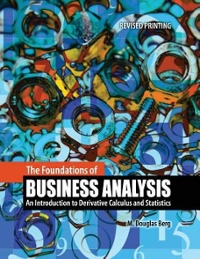Answered step by step
Verified Expert Solution
Question
1 Approved Answer
Suppose instead of the forward contract on DKNG described in (1), you own 10,000 shares of DKNG. Moreover, you observe the following prices on options
- Suppose instead of the forward contract on DKNG described in (1), you own 10,000 shares of DKNG. Moreover, you observe the following prices on options on DKNG expiring in April (in approximately 7 months):
Strike (K) Calls Puts Strike (K) Calls Puts
45 7.93 4.55 50 5.55 7.20
46 7.43 5.05 52.50 4.65 8.75
47 6.93 5.55 55 3.85 10.45
48 6.45 6.05 57.50 3.20 12.30
49 6.00 6.60 60 2.64 14.23
- Given that the price of DKNG is currently $48.35/share, which of the above options are in-the-money?
- Assume you are nervous about your holding in DKNG and you are considering buying a protective put on DKNG with K=$48/shr., but this put is expensive so you decide to cheapen it by using a collar instead (using the put at K=$48 and the call at K=$50). How much up front expense do you save by using the collar instead of the protective put (total expense not just per share)?
- Draw a graph of the payoff on your collar on the graph below:
- Distinguish between a short straddle at K=48 and a butterfly spread using calls and/or puts whose strikes are 46, 48, and 50.
Step by Step Solution
There are 3 Steps involved in it
Step: 1

Get Instant Access to Expert-Tailored Solutions
See step-by-step solutions with expert insights and AI powered tools for academic success
Step: 2

Step: 3

Ace Your Homework with AI
Get the answers you need in no time with our AI-driven, step-by-step assistance
Get Started


